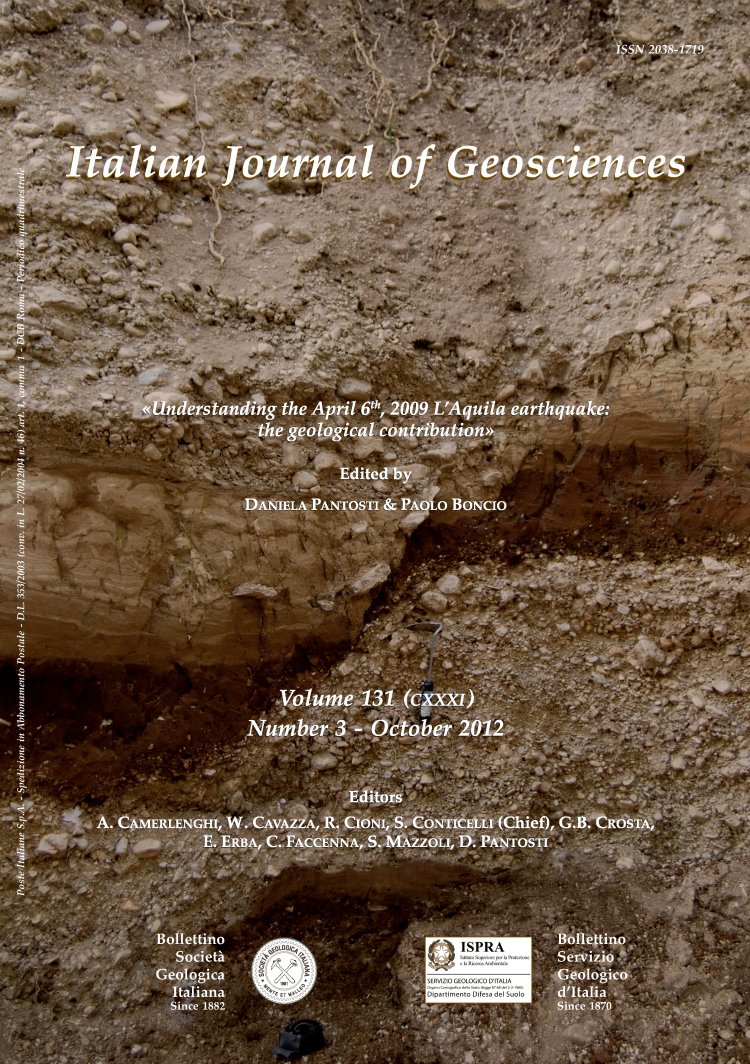
Surface displacements following the Mw 6.3 L'Aquila earthquake: One year of continuous monitoring via Robotized Total Station
Andrea Manconi(*), Daniele Giordan(*), Paolo Allasia(*), Marco Baldo(*) & Giorgio Lollino(*)
(*) Geohazard Monitoring Group, CNR-IRPI, Strada delle Cacce, 73 - 10135 Torino, Italy. Corresponding author (Email: andrea.manconi@irpi.cnr.it, Tel: +39 011/3977829, Fax: +39 011/3977821).
Volume: 131 (2012) f.3
Pages: 403-409
Abstract
We present the results of a continuous monitoring of the surface displacements following the April 6th 2009 L'Aquila earthquake in the area of Paganica village, central Italy. We considered 3-dimensional displacements measured via Robotized Total Station (RTS) installed the April 24th 2009 in the area of Paganica village (ca. 5 km ENE from L'Aquila town), where a water pipeline located within the urban centre was severely damaged. The monitoring system was set up in order to reveal potential post-seismic displacements that could cause further damages to the water pipeline. The RTS ran continuouslyfor about one year, with sampling rates varying from 2 to 4 hours, and measured displacements at selected point targets. The revealed surface displacements are in agreement with the results of a DInSAR time series analysis relevant to satellite SAR data acquired over the same area and time period by the Italian satellite's constellation Cosmo-SkyMed. Moreover, despite the RTS monitored area was spatially limited, our analyses provide detailed feedbacks on fault processes following the L'Aquila earthquake. The aftershocks temporal evolution and the post-seismic displacements measured in the area show very similar exponential decays over time, with estimated cross-correlation coefficients values ranging from 0.86 to 0.97. The results of our time dependent modelling of the RTS measurements suggest that L'Aquila earthquake post-seismic displacements were dominated by the fault afterslip and/or fault creep, while poroelastic and viscoelastic processes had negligible effects.
Keywords
(*) Geohazard Monitoring Group, CNR-IRPI, Strada delle Cacce,
73 - 10135 Torino, Italy. Corresponding author (Email: andrea.manconi@irpi.cnr.it, Tel: +39 011/3977829, Fax: +39 011/3977821).
Get Full Text